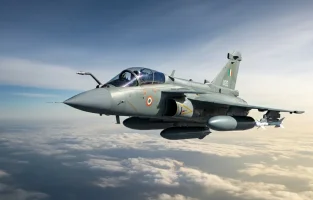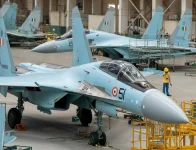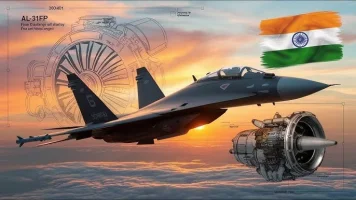- Views: 2K
- Replies: 9
The Indian Air Force (IAF) is taking a significant step to upgrade the electronic warfare (EW) capabilities of its Su-30MKI fighter fleet with the integration of the advanced Scorpius Escort Jammer from Israel.
According to defence sector sources, this strategic enhancement is designed to neutralise the increasingly sophisticated air defence systems deployed by China and Pakistan.
The move also continues the IAF's practice of equipping its aircraft with cutting-edge Israeli technology, similar to the self-protection jammers already fitted on the indigenous Tejas Mk1A combat aircraft.
Developed by ELTA Systems, a subsidiary of the state-owned Israel Aerospace Industries (IAI), the Scorpius Escort Jammer is engineered for a specialised and critical role.
Its primary function is to escort formations of strike aircraft by creating a safe corridor through hostile airspace. It achieves this by actively suppressing and disrupting a wide spectrum of enemy radars, including those used for surveillance and targeting.
Unlike self-protection jammers that defend a single aircraft, the escort variant is powerful enough to shield an entire mission package, and can be mounted as a pod on fighters like the Su-30MKI or on larger support aircraft.
The system's effectiveness stems from its use of advanced Active Electronically Scanned Array (AESA) and Digital Radio Frequency Memory (DRFM) technologies.
AESA technology allows the jammer to detect and engage multiple radar threats simultaneously and in different directions. The DRFM capability enables it to generate highly deceptive counter-signals, confusing advanced surface-to-air missile (SAM) systems such as the Chinese-operated S-400 and the homegrown HQ-9.
This "soft-kill" ability to electronically blind enemy defences is considered essential for conducting offensive operations in heavily contested zones.
This upgrade is a key component of a wider modernisation program for the Su-30MKI, which serves as the backbone of the IAF's fighter fleet with over 270 aircraft in service.
The integration of the Scorpius Escort Jammer complements other major enhancements, including the installation of the indigenous 'Uttam' AESA radar and the equipping of BrahMos and Astra air-to-air missiles.
Carried in a pod on the jet's centerline station, the jammer has a minimal impact on the aircraft's aerodynamics, allowing the Su-30MKI to retain its formidable combat radius of over 1,500 km while providing powerful electronic protection for accompanying forces.




